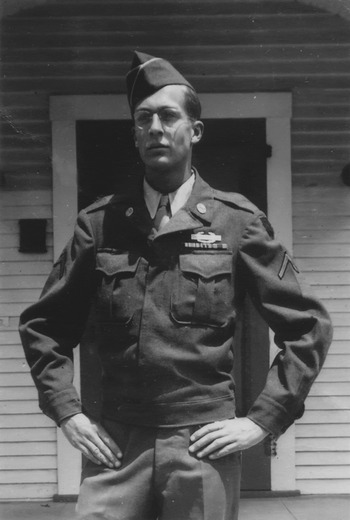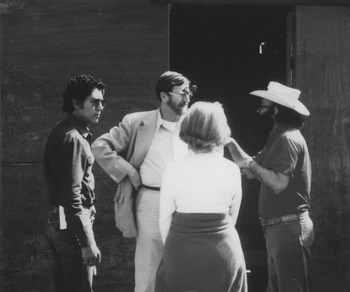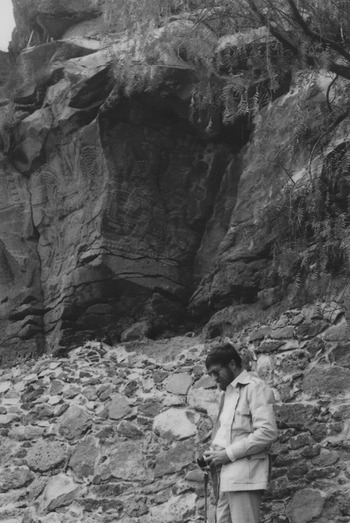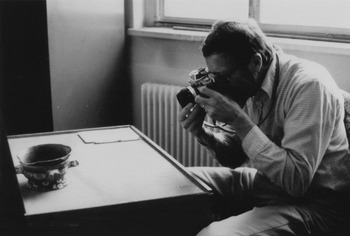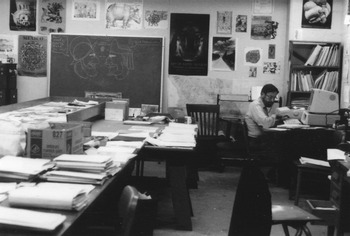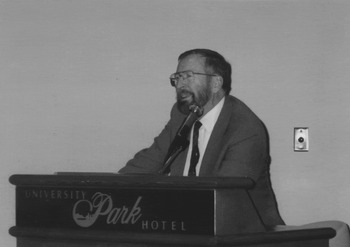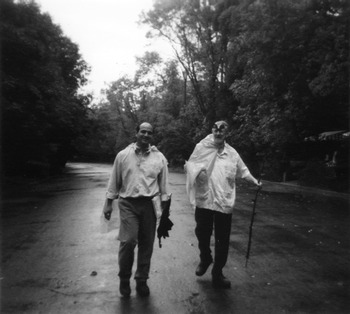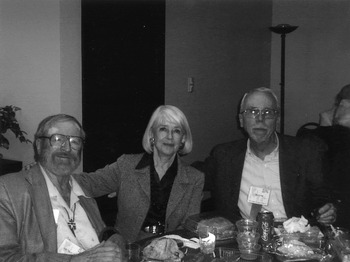Known internationally as the foremost Aztec scholar of his generation, H. B. Nicholson, Professor Emeritus of Anthropology at the University of California, Los Angeles (UCLA), passed away quietly and unexpectedly at his Redondo Beach home on March 2, 2007. Immersed in Mesoamerican culture for more than 70 years, he left several books and about 200 exhaustively researched articles devoted mainly to Aztec history, religion, art, pictorial manuscripts, and sixteenth-century primary sources.Footnote 1 Through his voluminous publications, 35 years of dedicated teaching of Mesoamerican archaeology and ethnohistory at UCLA (1956–1991), and innumerable scholarly papers and public lectures delivered throughout Mexico, Europe, and the United States, H. B. Nicholson was instrumental in making the Aztecs (also called Mexica or Nahua) of ancient Mexico better known to generations of scholars, students, and a wide public.
Nick, as he preferred to be called, was indefatigable in his scholarly pursuit of the Aztecs, tracking down everything produced by or written about this last culture to dominate pre-Hispanic Mexico. Despite the razing of the Aztec capital of Tenochtitlan after the Aztecs' defeat by the Spanish in 1521, thousands of pieces of Aztec art have survived. Propelled by his estimation of Aztec stone sculpture as one of the world's great sculptural traditions, Nick was tireless in locating examples in museums throughout Mexico, Europe, and the United States and in exploring firsthand every Aztec archaeological site, however remote. For more than 60 years, he photographed and documented everything Aztec he encountered not only on display but also in museum storage collections, amassing an enormous repository of color slides and black-and-white photographs that he came to call the Aztec Archive. With his prodigious memory, Nick could identify every piece of Aztec art he had seen, recall where and when and by whom it had been found and was located, name the articles and books in which it had been illustrated or discussed, and spontaneously discourse on its glyphic dates and esoteric iconography.
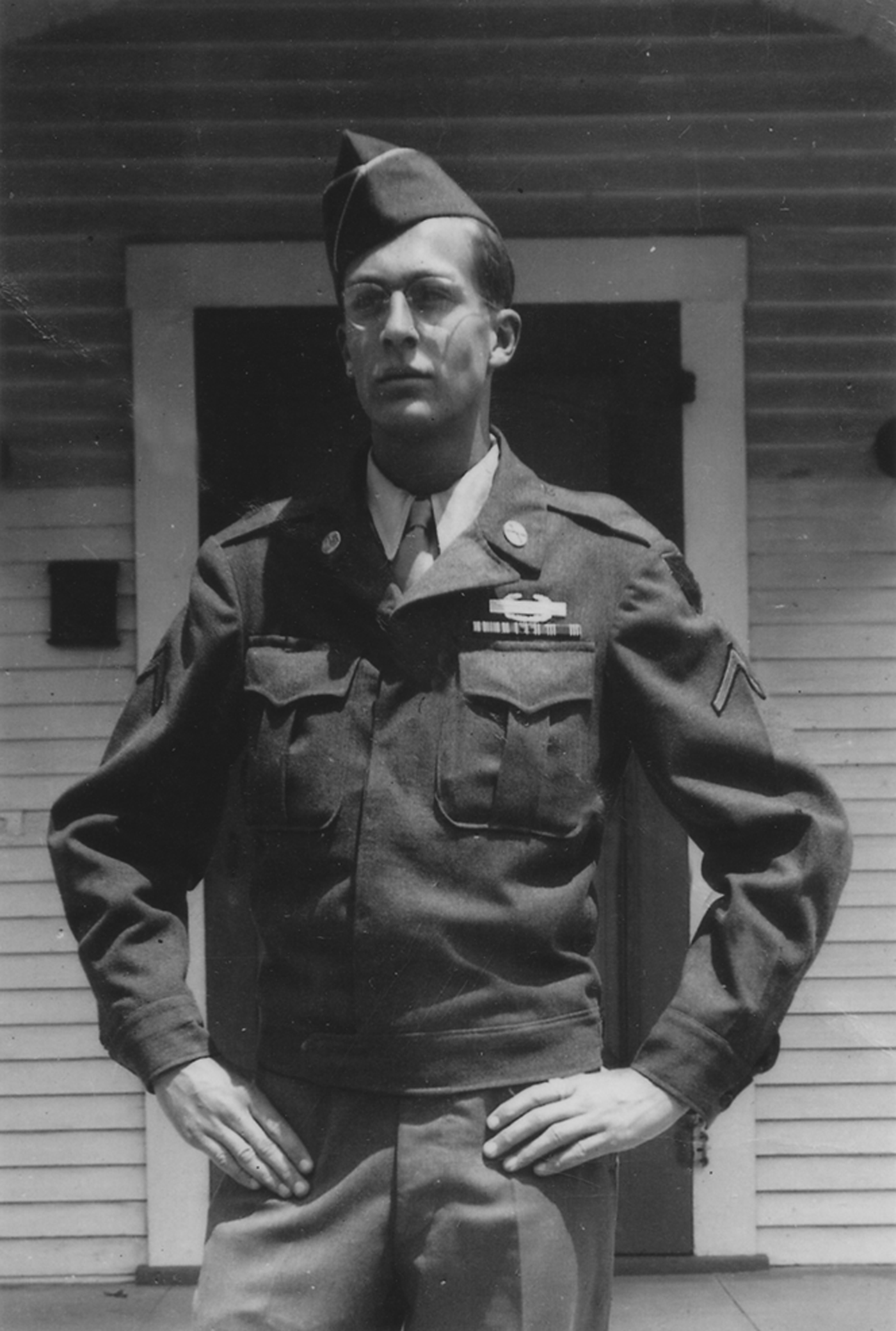
Figure 1. Private Nicholson in his army uniform, San Diego, summer 1945.
Nick displayed a phenomenal mastery of primary sources and secondary literature on the Aztecs and other ancient Mexican cultures. He wrote extensively about the encyclopedic work on Contact-period Mexico compiled by the sixteenth-century Franciscan missionary writer Bernardino de Sahagún, with the critical assistance of a bilingual team of former Nahua students. In 1985, with Eloise Quiñones Keber, he organized a session on Sahagún's work for the annual American Society for Ethnohistory conference. Expanded, and with the editorial addition of J. Jorge Klor de Alva, the papers were published as The Work of Bernardino de Sahagún: Pioneer Ethnographer of Sixteenth-Century Aztec Mexico (1988). In 1991, Thelma Sullivan died without having finished her translation of the Nahuatl texts gathered from elders in Tepepulco, Hidalgo, by Sahagún's young collaborators and collected in what Francisco del Paso y Troncoso named the primeros memoriales. Nick—who had written one of the recommendations for Thelma's successful National Endowment for the Humanities translation grant—rescued the project and saw it through to publication in 1997. His role in getting this first color-facsimile, commentary, and English translation produced was immense. He enlisted the assistance of two eminent colleagues, Arthur Anderson and Charles Dibble, the translators of the Nahuatl text of the final stage of Sahagún's opus, called the Florentine Codex, to complete the sections Thelma had left unfinished or not yet begun. He added to the linguistic notes provided by the translators and wrote most of the other notes that accompanied the translation, as well as an introductory study.
In addition to the Aztecs, Nick was intrigued by the Toltecs of Tollan (present-day Tula, Hidalgo), who exerted a profound influence on later Aztec history, ideology, and art. His abiding fascination with the Toltecs began when he was about 10—the serendipitous result of a 1936 lecture given by a young and unknown speaker on the subject of the “fair god” of ancient Mesoamerica, Quetzalcoatl. It was illustrated by a relief of the Temple of the Cross of Palenque that Nick could already identify from a cast of it in the San Diego Museum of Man's vestibule. A childhood interest in this legendary ruler and cultural hero of the Toltecs eventually led to his 1957 Harvard University dissertation, Topiltzin Quetzalcoatl: A Problem in Mesoamerican Ethnohistory. This meticulously researched study, which probes the possible historicity of “the mysterious Lord of the Feathered Serpent” by critically analyzing the mass of primary documentation in which he appeared, became a much reproduced and cited underground classic.Footnote 2 After many years, Nick was finally persuaded to update his work, provide it with a new introduction, and publish it in 2001 as Topiltzin Quetzalcoatl: The Once and Future Lord of the Toltecs. Despite the intervening decades, Alfredo López Austin asserts in his prologue, “Nicholson's thesis still retains the freshness of the original, as well as its scientific rigor.”

Figure 2. Discussing recent discoveries with Francisco Hinojosa, Doris Heyden, and Eduardo Matos Moctezuma at the Tenochtitlan Templo Mayor excavation site in downtown Mexico City, January 1982.
Nick was long fascinated, as well, by the unsolved questions surrounding the “Mixteca Puebla” pictorial and ceramic art produced by the eastern Nahua of the Puebla-Tlaxcala and Gulf coast regions to the east and the Mixtecs in southwestern Oaxaca. In several articles and a 1994 symposium volume, Mixteca-Puebla: Discoveries and Research in Mesoamerican Art and Archaeology, edited with Eloise Quiñones Keber, he attempted to redefine Mixteca-Puebla as a style, correcting George Vaillant's earlier description of it as a “culture” or “civilization.” He sought to identify its defining features and probe its history and dissemination, complex iconography, and similarities to and differences from contemporaneous Aztec art. Above all, whatever the subject, his primary interest lay in penetrating the esthetic and ritual-religious aspects of Mesoamerica, as manifested particularly in the late pre-Hispanic ritual-divinatory pictorial manuscripts and artworks of central Mexico.
Born in La Jolla, California in 1925, Nick grew up in nearby San Diego, a city first founded as a Franciscan mission, whose Hispanic roots and proximity to Mexico left a deep imprint on his personal and professional life.Footnote 3 A lifelong preoccupation with history, literature, and art—particularly that of ancient Mexico—began at an early age, when his family moved to San Diego's Hillcrest neighborhood. It was within biking distance of Balboa Park, which would become one of Nick's favorite places on earth, along with the La Jolla cove, a paradisiacal pocket of the California coast where he often swam and snorkeled as a youngster. Nick's precocious interest in ancient Mexico was nurtured by exhibits at the San Diego Museum of Man, one of several Spanish Colonial-style buildings erected in Balboa Park for the 1915 Panama–California Exposition. Especially sparking his youthful imagination were monumental casts of eight stelae made from molds in 1914 by Edgar Lee Hewett, then excavating with a young Sylvanus Morley at the Lowland Maya site of Quirigua in Guatemala. A second California–Pacific International Exposition that began in 1935 in Balboa Park further galvanized his interest in the Aztecs and Maya. Along with the aforementioned talk on the “fair god,” a colorful musical drama with a Maya theme also made a powerful impression on him. He began to haunt the Museum of Man and work his way through its library. Over time, his intense interest in Mesoamerica coalesced around the Aztecs, the conquest of Mexico, and early colonial New Spain.
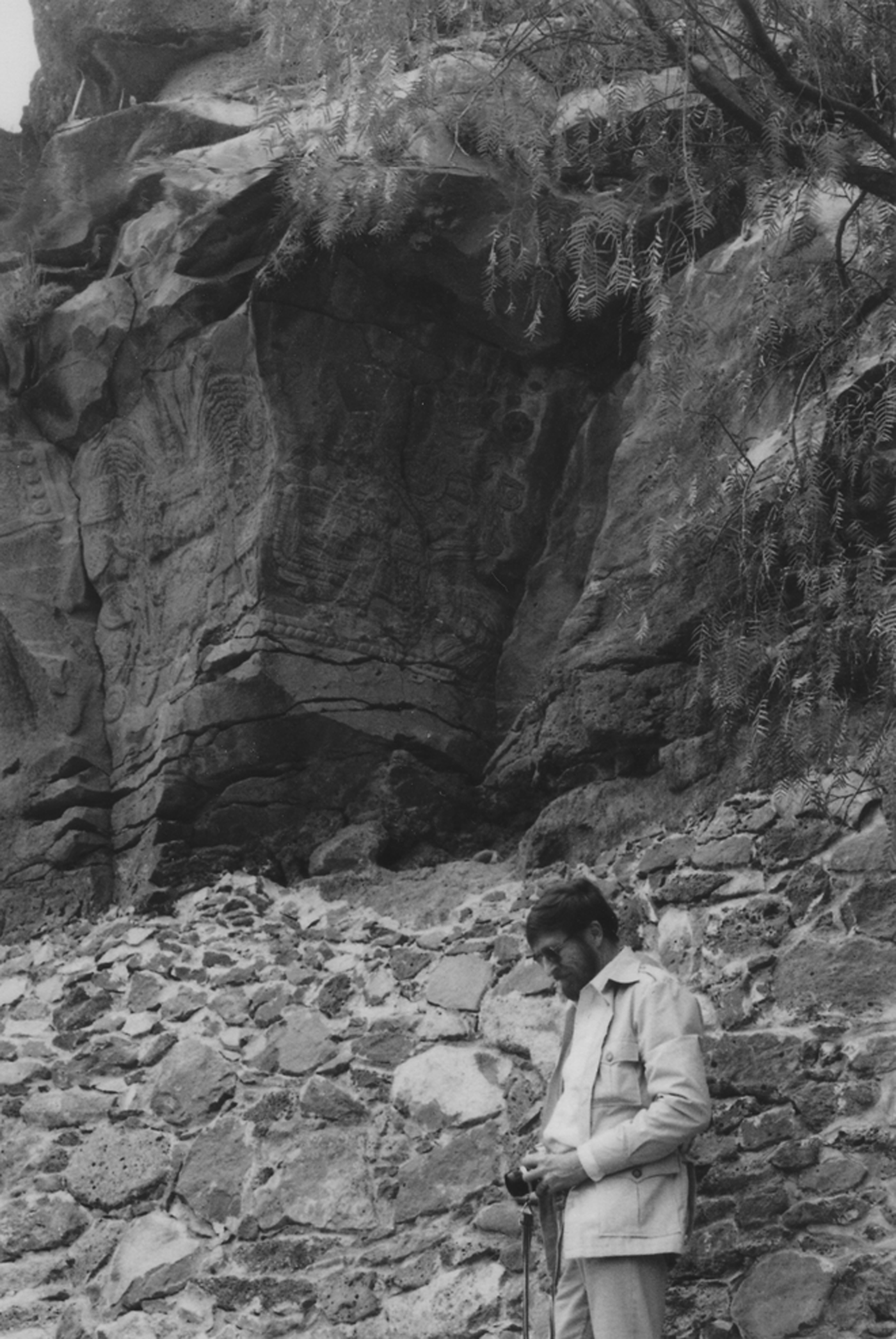
Figure 3. Photographing the cliff carving of Topiltzin Quetzalcoatl on the Cerro de la Malinche, outside Tula, Hidalgo, in Mexico, January 1983. Nick was the first to identify the image as an Aztec sculpture.
Following graduation from high school in 1943, Nick attended the University of California (UC), Berkeley, for one year before enlisting in the U.S. Army in 1944. He saw combat in World War II in Germany, near the town of Ingolstadt. Later he vividly recalled his first of many visits to Europe, “courtesy of Uncle Sam,” while lamenting the tragedy of seeing Germany in ruins. Although originally slated to be part of the invasion of Japan, he instead completed his service with a tour of duty in the Philippines in 1945. Before returning to UC Berkeley, Nick made his first trip to Mexico City in 1946. Years later, he still spoke about the overwhelming experience of viewing, for the first time, the greatest monuments of the Aztecs that were then on display in the Salón de los Monolitos in the old National Museum of Anthropology in downtown Mexico City. It was at that early date that he first met Mexico's greatest archaeologist, Alfonso Caso, a meeting facilitated by Mexico's greatest ethnohistorian, Wigberto Jiménez Moreno (“el gran maestro,” in his words), whom Nick had first met as a freshman at UC Berkeley. Nick loved his years at Berkeley and praised his professors there, among them the outstanding Andeanist John Rowe. Following receipt of his bachelor's degree in anthropology in 1949, he earned a law degree from Berkeley's Boalt Hall in 1952—although he admitted to spending most of his time in the library reading his way through the massive corpus produced by the turn-of-the-century German Mesoamericanist Eduard Seler.
Making a momentous decision to turn from law to academia, Nick next enrolled in the doctoral program in anthropology at Harvard University in 1952. Again he felt fortunate to study under professors of the caliber of his mentor Gordon Willey, and visiting scholars such as Silvio Zavala, who taught a seminar on colonial Mexican history, and with a gifted group of fellow students that included Michael Coe, John Glass, David Kelley, and William Sanders. He also interacted with other resident luminaries, such as Tatiana Proskouriakoff, who was working as an artist with the Carnegie Institution of Washington, DC, then located next to Harvard's Peabody Museum, and he became a lifelong friend of the era's leading Mayanist, Eric Thompson. Nick also took part in archaeological fieldwork at Point Barrow, Alaska, in 1953 and in Puerto Rico in 1954, where he became well acquainted with the future Caribbean specialist Ricardo Alegría. It was at a conference he attended in Mexico City that same year that he met and befriended some of Mexico's most illustrious scholars, including Ignacio Bernal (and later Bernal's secretary, translator, and assistant Doris Heyden), Jorge Acosta, Eduardo Noguera, José Luis Franco, Ignacio Marquina, Miguel Covarrubias, Paul Kirchhoff, Roberto Weitlaner, and Carmen Cook de Leonard, as well as Arthur Anderson and Charles Dibble. Even while taking his graduate courses at Harvard, Nick published three articles and reviews in American Antiquity, two in American Anthropologist, and others in Archaeology and El México Antiguo, an accelerated pace he kept up throughout his career.
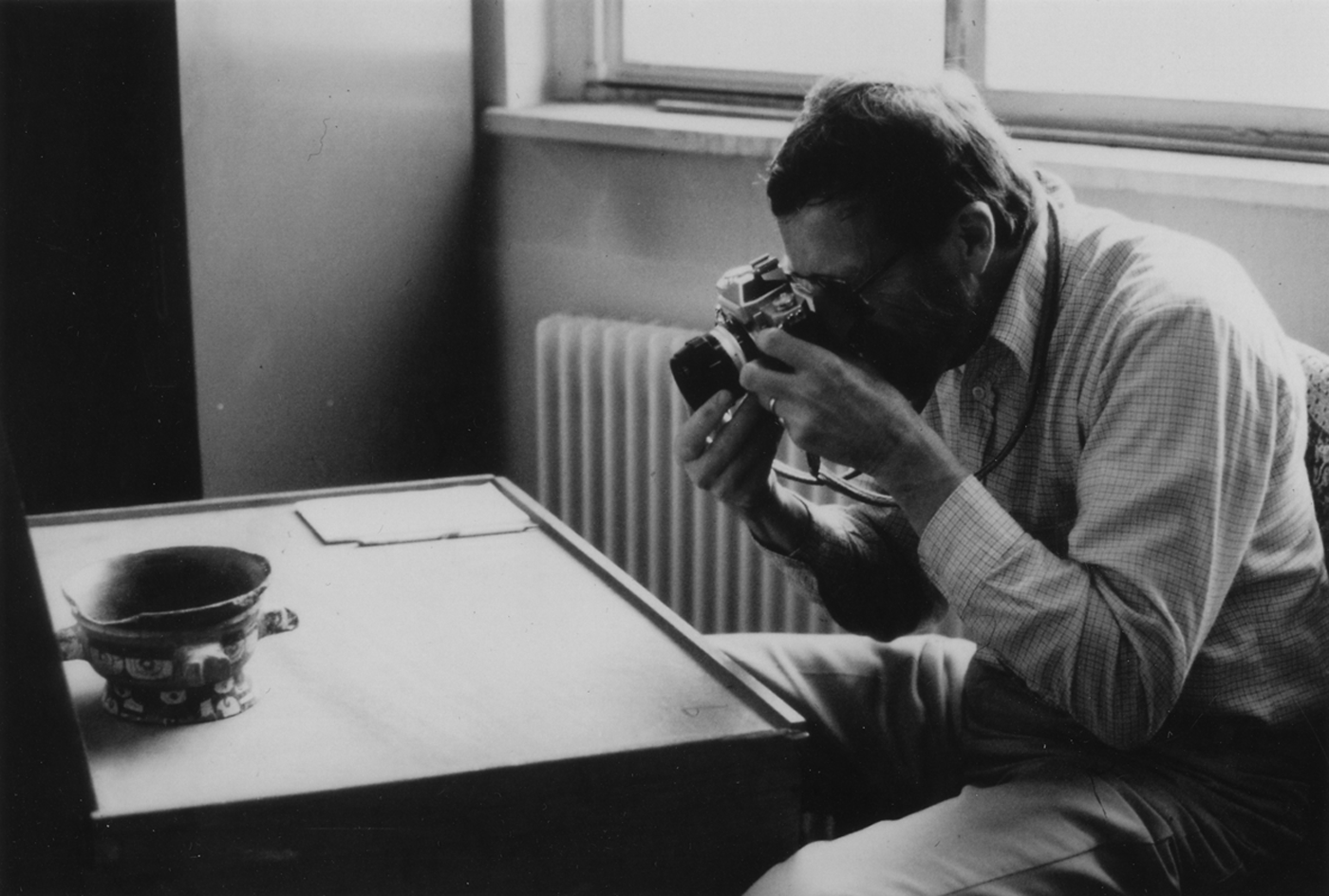
Figure 4. Photographing a polychrome piece of Mixteca-Puebla ceramics at the Musée de l'Homme, Paris, August 1983.
Awarded a Doherty Fellowship for his dissertation research, Nick, and his wife, Margee, spent an eventful year in Mexico from 1955 to 1956, which allowed him to travel extensively to visit pre-Columbian archaeological sites and museums, camera always in hand. While still engaged in his dissertation-research year, Nick was interviewed in Mexico City (which he invariably referred to as “la ciudad de los palacios”) by the archaeologist Clement Meighan of UCLA'S Department of Anthropology, who was seeking to fill a vacancy left by the sudden death of the Mayanist George Brainerd. Favorably impressed, UCLA offered Nick an “acting lectureship” for the 1956–1957 academic year, with continuation in the position contingent on completing his dissertation. During that first year, Nick taught six different courses, ran a summer field school in Utah, welcomed his first child, Bruce—and finished writing his dissertation in record time. He also took over Brainerd's archaeological project at Cerro Portezuelo. Later he began another at Chimalhuacan, an Aztec site in the eastern Basin of Mexico; directed the excavation of a ballcourt at another basin site in Ixtapaluca Viejo; and joined with Clem Meighan to carry out a series of excavations in western Mexico. These archaeological projects were all undertaken with UCLA graduate students. By the time he retired in 1991, Nick estimated that he had directed about 25 dissertations on all parts of the Americas.
Nick was involved in numerous activities on campus and in the Los Angeles area. A symposium he organized at UCLA resulted in the publication in 1976 of Origins of Religious Art and Iconography in Preclassic Mesoamerica. An introduction and article on “Preclassic Mesoamerican Iconography from the Perspective of the Postclassic: Problems in Interpretational Analysis” laid out his belief in continuities of certain aspects of Mesoamerican culture over the centuries. Results of his investigations of western Mexican art and archaeology were incorporated in Sculpture of Ancient West Mexico, Nayarit, Jalisco, Colima: The Proctor Stafford Collection, written with Clem Meighan and Michael Kan in 1970. When the collection was donated to the Los Angeles County Museum of Art, Nick revised the volume for a second edition that came out in 1989 with an added subtitle, “A Catalogue of the Proctor Stafford Collection at the Los Angeles County Museum of Art.” For a 1979 catalogue, Pre-Columbian Art from the Land Collection, he wrote the preface and Mesoamerican essay and entries, while Alana Cordy-Collins handled those for the intermediate and Andean areas. Nick participated in symposia sponsored by UCLA's Latin American Center and exhibitions and catalogues produced by the Ethnic Arts Council of Los Angeles. He showed up at nearly every meeting of the Mesoamerican Network, a group of Los Angeles–area aficionados who gather periodically for exhibitions, lectures, and discussions. In 1979, he founded the UCLA Aztec Tertulia, a discussion group of students and faculty that featured invited speakers on the archaeology, ethnohistory, and art history of pre-Hispanic and early colonial Mesoamerica. It met several times a year under his direction until 1993.

Figure 5. Working in S14, sub-basement of Haines Hall, UCLA, January 1986. Note Nick's blackboard drawing of Cortés chatting with Motecuhzoma II in the background.
Nick took on several demanding editorial positions throughout his career. From 1958 to 1962, he was assistant editor for Middle America for American Antiquity and from 1959 to 1971 he was contributing editor for Ethnohistory: Mesoamerica for the Handbook of Latin American Studies. Both of these positions involved the challenging task of reviewing and reporting on books published in the field during the year. From 1958 to 1971, he also became part of the editorial team of the Handbook of Middle American Indians (1964–1976), for which he compiled several checklists and produced working papers on pictorial manuscripts, central Mexican sculpture, central Mexican religion, and Mesoamerican ethnohistory. His articles for the Handbook, “Major Sculpture in Pre-Hispanic Central Mexico” and “Religion in Pre-Hispanic Central Mexico” (vol. 10, the first volume of the Archaeology of Northern Mesoamerica), display the meticulous research and synthesizing skills that characterize his scholarship. For the essay on religion, one of his most frequently cited articles, he condensed a voluminous and unwieldy mass of primary materials into a comprehensive and lucid text. In his own words:
In this article I tried to distill, based on all of the relevant primary sources, the essence of the religious/ritual sector of “Aztec” culture in a few pages. Because of the copious complexity of the subject … I tried to summarize much of the data in a series of charts. I also attempted a preliminary classification of the crowded, intricate pantheon of Aztec religion, grouping the many deities into three major, overarching themes, which, in turn, could be broken down into various subthemes expressed by various deity complexes.Footnote 4
He clearly succeeded, for, as Doris Heyden remarked,
It has always seemed to me that one of the most difficult tasks facing a scholar/writer is condensing a vast amount of data into a concise, clear, informative account, removing the chaff from the wheat, as the colonial chroniclers would say. Nick is a master at this kind of presentation. The pages of his articles in my copy of volume 10 of the Handbook are proof of this: they are worn thin from so many copies having been made for my students. They constitute what I think of as the “bible” of studies on Central Mexican religion and art.Footnote 5
Taking on the role of associate editor, along with Charles Gibson, for volumes 14 and 15 of the “Guide to Ethnohistorical Sources” of the Handbook of Middle American Indians, Nick also wrote articles on “Sahagún's ‘Primeros memoriales,’ Tepepulco,” and “Eduard Georg Seler, 1849-1922” (vol. 13), and “Middle American Ethnohistory: An Overview” (vol. 15), all of which provide further evidence of his overarching grasp of the known primary and secondary sources for Mesoamerican studies.
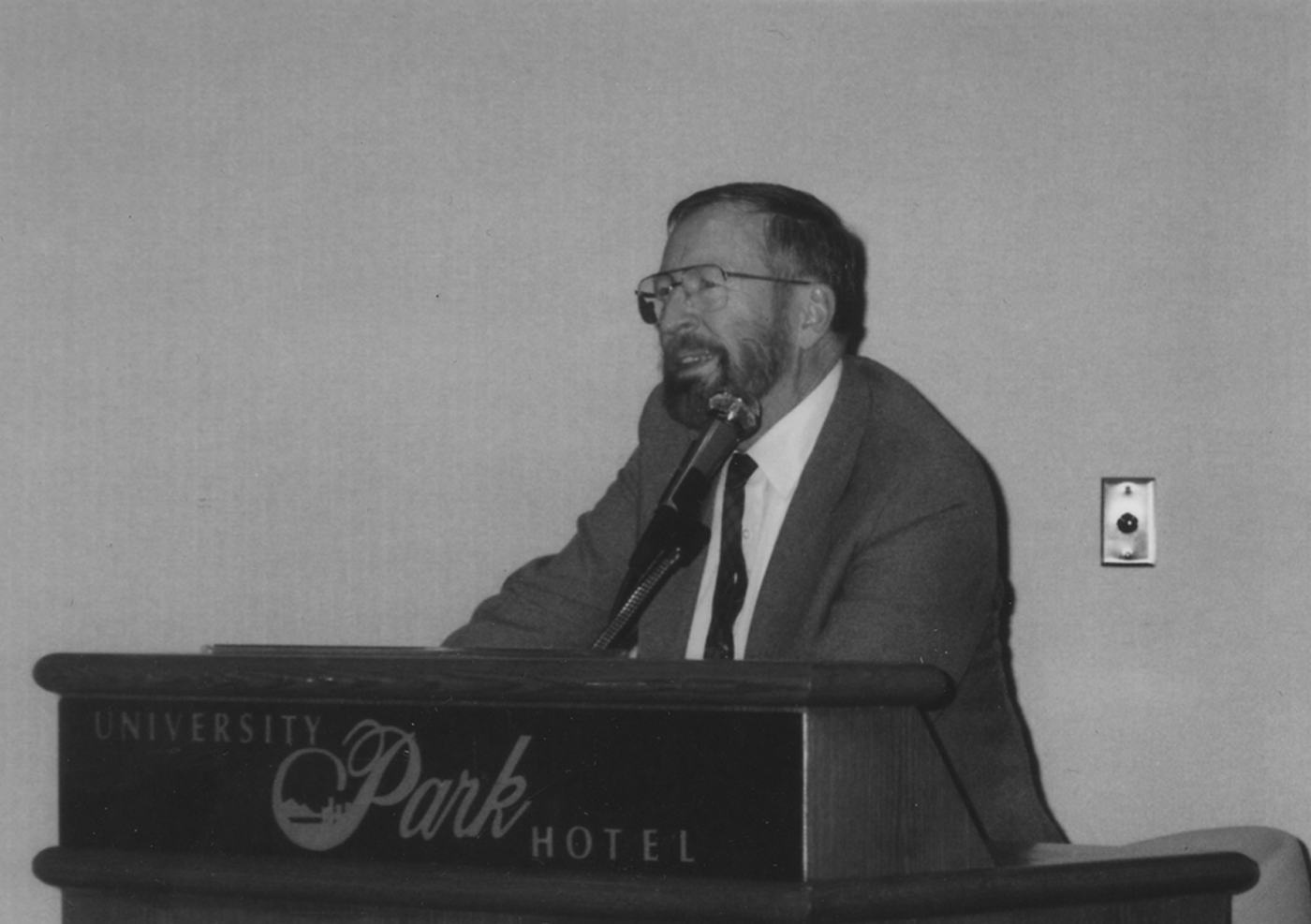
Figure 6. Presiding over the tribute session to Arthur Anderson and Charles Dibble at the American Society for Ethnohistory conference in Salt Lake City, November 1992.
Later, Nick's expertise was sought as a senior consulting editor for such projects as Grove's 34-volume Dictionary of Art (2003) and the three-volume Oxford Encyclopedia of Mesoamerican Cultures: The Civilizations of Mexico and Central America (2001), for which David Carrasco of Harvard served as editor-in-chief. The authoritative articles he wrote for the Encyclopedia on the Feathered Serpent, Mixteca-Puebla style, Bernardino de Sahagún, Eduard Seler, and Topiltzin Quetzalcoatl revisit some of the subjects Nick had spent a lifetime studying.
Nick also played a pivotal role as a curatorial consultant for the 1983 international exhibition of Aztec art held at the National Gallery of Art in Washington, DC, for which he also wrote the catalogue, Art of Aztec Mexico: Treasures of Tenochtitlan, with Eloise Quiñones Keber. This first major exhibition of Aztec art ever held in the United States had its run extended for several months because of its unanticipated popularity. The prize-winning catalogue featured 80 major pieces from museums in Mexico, Europe, and the United States. The accompanying essays combined historical background with iconographic and stylistic analyses of a wide range of Aztec sculpture, ceramics, feather work, and gold work, along with Mixteca-Puebla ceramics, gold work, and stone mosaic items.

Figure 7. Escaping from a sudden downpour after viewing Aztec ruins in Chapultepec Park with Leonardo López Luján, Mexico City, August 2000 (incorrectly identified as an apparition of Topiltzin Quetzacoatl leading the Toltecs into exile).
An engaging conversationalist and polished lecturer, never in need of a microphone or at a loss for words, Nick valued the give and take of scholarly exchange with his colleagues and was in high demand as a speaker and moderator. He organized symposia and participated in numerous conferences, including the International Congress of Americanists, at which he presented 12 papers over the years, as well as the American Anthropological Association, the Society for American Archeology, and the American Society for Ethnohistory, among others. He was invited to speak at several Dumbarton Oaks conferences in Washington, DC, and from 1979 to 1981 he served on the Advisory Committee for Pre-Columbian Studies. He was a core member of the periodic gatherings of David Carrasco's Moses Mesoamerican Archive and Research Project, whose “community of conversation” among a lively international group of Mesoamericanists has taken place at the University of Colorado, Boulder; Princeton University; Harvard University; and various locations in Mexico. In recognition of Nick's scholarly achievements, in June 2002 the H. B. Nicholson Award for Excellence in Mesoamerican Studies was established and first awarded at a meeting sponsored by the David Rockefeller Center for Latin American Studies, the Peabody Museum of Archaeology and Ethnology, the Department of Anthropology, the Harvard Divinity School, and the Moses Mesoamerican Archive, all at Harvard University.

Figure 8. Enjoying lunch with two of his former students, Drs. Patricia Anawalt and David Grove, between sessions of the symposium held in his honor at UCLA, November 2004.
Nick especially enjoyed participating in the Latin American symposia organized at the San Diego Museum of Man in his hometown. In 1992, the museum held “The Aztecs: A Symposium in Honor of H. B. Nicholson” to celebrate his retirement from teaching. As the introduction by the museum's director, Douglas Sharon, and curator, Alana Cordy-Collins, noted:
The impact of Dr. Nicholson's retirement was felt at the Museum of Man not only because Sharon and Cordy-Collins cut their Mesoamerican teeth in his classes, but also because of one historic fact: It was the San Diego Museum of Man that an enthusiastic and impressionable young man became intrigued with Mesoamerica. That young man went on to become one of the finest Aztec scholars in the history of the discipline, a true luminary.Footnote 6
Nick was honored again at a November 2004 symposium, “Olmec, Maya, Aztec: Papers in Honor of Dr. H. B. ‘Nick’ Nicholson,” organized by the Cotsen Institute of Archaeology at UCLA. Former students gathered from around the country to deliver papers in honor of their teacher, mentor, and friend.Footnote 7 A reception and tribute dinner held in the evening and attended by an enthusiastic cohort of students, associates, and family revived many memories. They recalled the unending lines outside his department office during office hours; listened to David Grove's stirring narration of a close call with angry residents in Chimalhuacan, who imagined the UCLA archaeological team to be absconding with their “tesoros”; and enjoyed James Brady's tale of returning from a season of excavation at Naj Tunich and stopping off at a remote Guatemalan motel, where he was astonished to hear Nick's unmistakable voice booming out from the restaurant where he had stopped for lunch on his way to Copan following a conference in Guatemala City.
With his boundless intellectual curiosity and love of history, Nick was an avid traveler and student of other ancient cultures, especially those of Egypt and the Middle East. He counted trips to these areas among the most memorable of his well-traveled life. Remembering these journeys, his son Eric recalls Nick “reciting The Rubaiyat of Omar Khayyam in the gardens of Isfahan” and astonishing an Egyptian tour guide when he “identified all the deities carved on [Ramesseum] temple's venerable walls, and then deftly recited Shelley's ‘Ozymandias,’ inspired by the ‘colossal wreck’ of that very site.”Footnote 8 Nick was also a Shakespeare expert who could recite long passages from the Bard (as he called him). A visit to London was never complete for him without seeing one or more of Shakespeare's plays. He also journeyed to Stratford-upon-Avon to take in performances of Shakespeare and, throughout his life, attended the annual Shakespeare festival at San Diego's Globe Theater. Beginning in 1939, when in his mid-teens, he was a lifelong listener to the weekly broadcasts of New York's Metropolitan Opera. An enthusiastic movie buff, as well, he could recite dialogue from his favorite films or handily drop a line from one of them, to devastating or hilarious effect.
Nick's consuming passion for all things Aztec was highly contagious, even for neophytes and nonprofessionals, and his warmth and good humor drew you in “poco a poco,” as he would have said in what he self-deprecatingly referred to as his “Tijuana pidgin.” A generous colleague and teacher, he shared his astonishing store of knowledge freely. Those who got to know him will not soon forget his irrepressible gifts as a cartoonist, raconteur, and coiner of phrases such as, “It takes a dedicated nut,” which he applied to those engrossed in a life of scholarship. He came through as a real human being, a trusted and true friend, one who never forgot a birthday or Cinco de Mayo greeting and was always there with a word (or many) to prop you up or get you going. A Renaissance man himself, and with the larger-than-life vitality of a Shakespearean character, H. B. Nicholson will live on as one of Mesoamerica's greatest scholars and indelible personalities.


